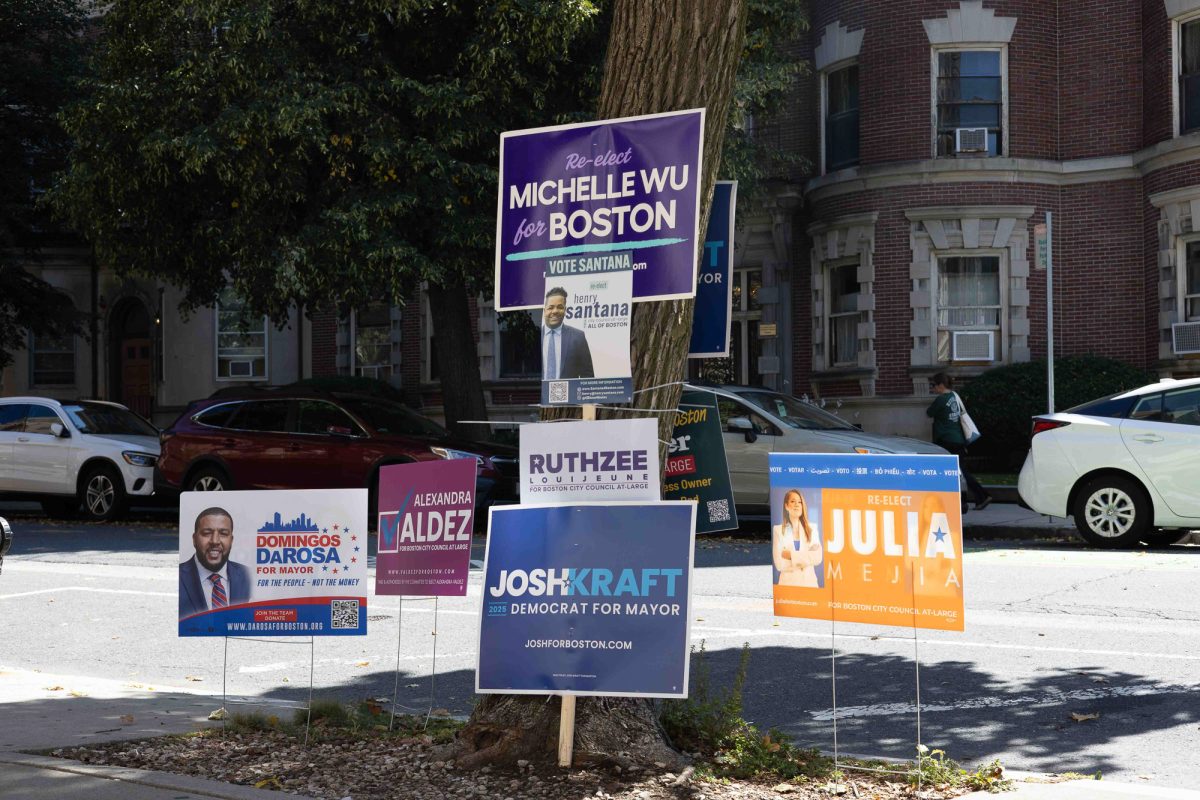
With a little bit of help from one of the greatest U.S. composers of all time, music director Andris Nelsons and the Boston Symphony Orchestra opened up their performance season on Friday night with passion and excitement.
The BSO opening night performance exclusively featured selections from late composer and conductor Leonard Bernstein, perhaps most famous for his musical “West Side Story.”
Massachusetts-born and Harvard-educated, Bernstein spent much of his long and illustrious career in the Boston area.
Nelsons consistently conducted the symphony with such beauty and whimsy that Bernstein himself would’ve been smiling.
The show opened with “Divertimento for Orchestra,” an eight-movement piece that premiered at the Boston Symphony Orchestra in 1980 and was written for the symphony’s 100th anniversary.
The piece jumps from a bombastic opening that allowed the symphony’s brilliant brass section to shine to slow, thoughtful string-driven movements. There’s jazz, dance and theatrical elements at play throughout the piece, and a number of the movements almost beg to be danced to.
It was a fantastic and almost certainly deliberate choice to start with “Divertimento.” The work is accessible and fun, and it requires no sophisticated ear to enjoy and appreciate.
This theme ran throughout the show. Much of Bernstein’s work feels open and street-level. It’s not out of place in a symphony hall, but it could be welcomed and played by buskers and street performers as well.
The second selection was “Halil,” a Bernstein piece that features a flute soloist and was written in memory of a young flautist, Yadin Tanenbaum, who was killed in the Arab-Israeli War. The piece is written for solo flute and a smaller, chamber orchestra. Elizabeth Rowe of the BSO performed the solo on Friday night.
Snare drums and various percussion instruments emulate the sounds of war throughout the piece. Gunshots and the drones of machinery jump out and surprise the audience, all while the soloist plays a mixture of aching, melodic passages and urgent, panic-filled technical ones.
There’s a certain yearning to “Halil,” and the BSO captured it beautifully. Two flautists positioned on the back of the stage call out and respond to the soloist throughout the piece. A second call-and-response section between the soloist and the violin marks another high point for the piece.
It feels as if the song is longing for something just out of reach, and in that stretch of seconds between the last note releasing and Nelsons lowering his hands to roaring applause, it felt as if the audience and the orchestra were all reaching out together.

Following “Halil” was a short selection of vocal numbers, picked from Bernstein’s various musicals, choir compositions and operas. Soprano Julia Bullock treated the audience to “A Julia de Burgos” and “Piccola Serenata.” Bullock’s voice in each was commanding, beautiful and captivating.
Bullock then performed “A Little Bit in Love,” from Bernstein’s musical “Wonderful Town.” Here she was able to show off a playful and whimsical side of her distinguished voice, and she danced and beamed during the musical interludes.
Bullock then handed the microphone to singer Frederica von Stade, for “I am Easily Assimilated,” from “Candide.” During von Stade’s performance, members of the Tanglewood Festival Chorus joined her on stage dressed in white tuxedos, sombreros and colorful dresses to sing and dance along. It was fun, theatrical and, once again, accessible and fantastically unsophisticated.
Bullock and von Stade sang “Neverland” from Bernstein’s “Peter Pan” musical to end the vocal selections. Their voices blended and rang out together giving the song, originally sung by the mermaids in the musical, a dream-like quality.
The performance ended at the only place it logically could: “West Side Story.” Bernstein’s “Symphonic Dances from West Side Story” features musical themes from the beloved work of theater and presents them in a succinct 23 minutes.
“Symphonic Dances” had it all. The snaps, the desire-filled melody of “Somewhere” and the themes of “The Rumble” were all played to perfection by the BSO. The different sections of the musical morphed and melded into one another, providing a continuous experience focused on celebrating “West Side Story” and Bernstein himself.
Before beginning “Symphonic Dances,” Nelsons turned and addressed the audience directly for the first time. After making it clear how truly anxious he was to present Bernstein’s music, Nelson described how he felt Bernstein’s music affected all of us: the symphony, the audience and the world.






















































































































Diane Kindall • Sep 26, 2017 at 6:08 pm
Jonathan, you are so very impressive and genius in your writing! I was so fortunate to actually go to see L Bernstein for my birthday in NYC when I was a young person. It was a rare and wonderful treat!
You know how VERY proud your grandpa is of you and it’s been my joy to meet you this year! Hope to see you soon!